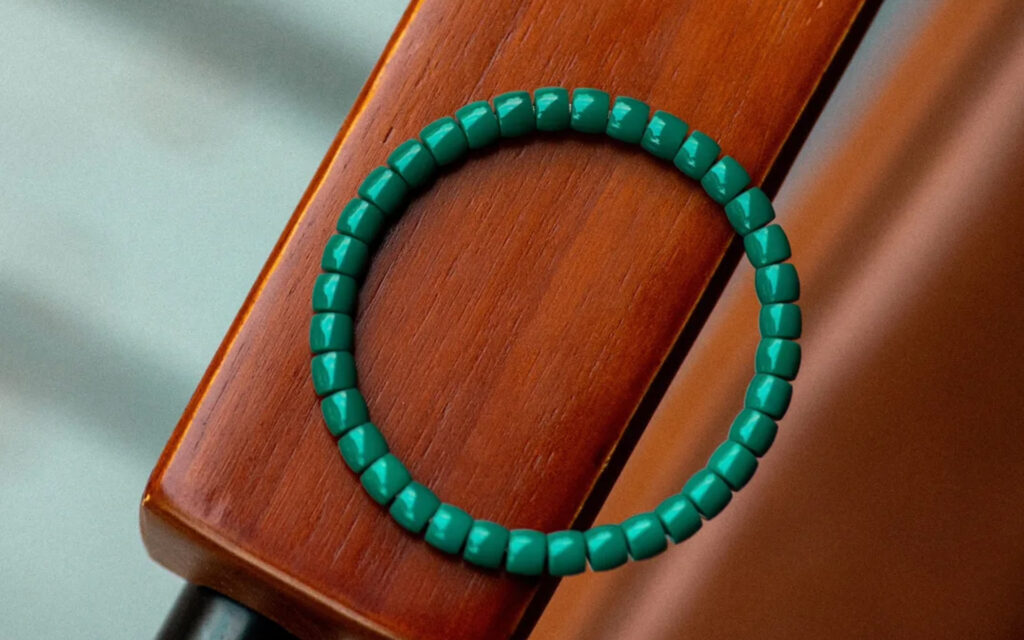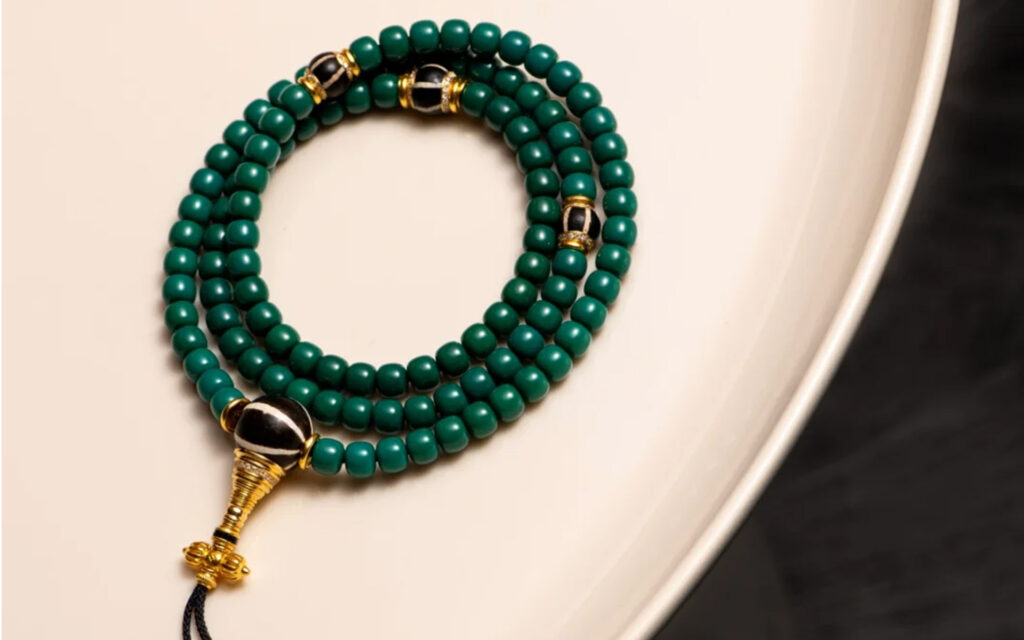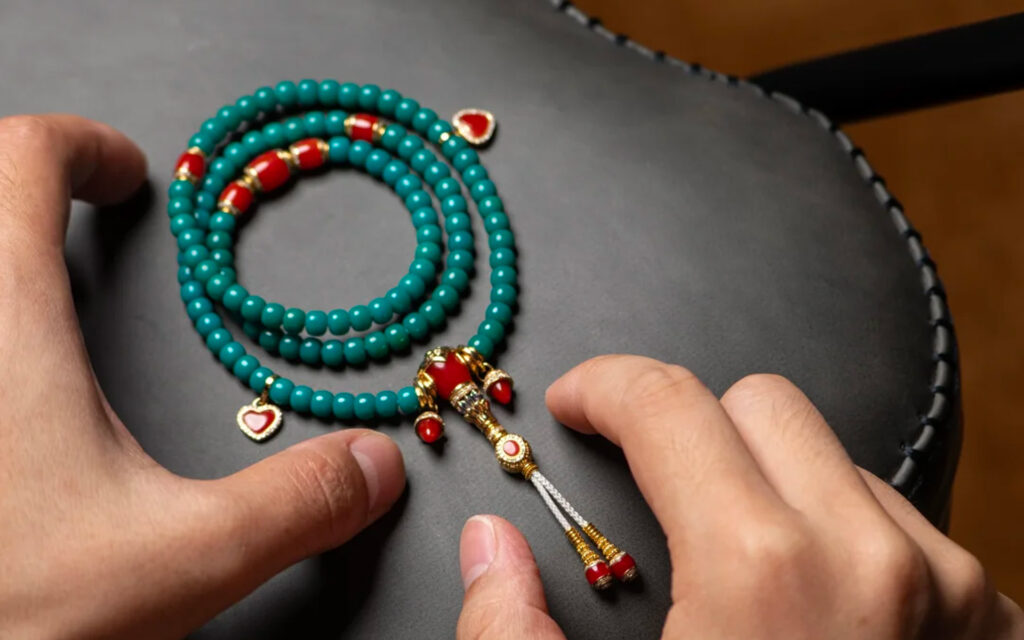Lately, complaints have been echoing through turquoise enthusiast circles. Many collectors are venting about the murky market, flooded with counterfeits, and some have even lost interest in turquoise altogether—which truly saddens me. The truth is, turquoise itself is pure and straightforward; it’s just that people don’t understand it deeply enough.

I. Porcelain-like Quality: The Cornerstone of Quality
In my view, porcelain-like quality is the most crucial factor when selecting turquoise, especially for beginners. Prioritize pieces with this quality. Simply put, porcelain-like quality refers to the surface density and luster of the turquoise. High-ceramic-quality turquoise boasts a tightly packed texture, a surface as smooth as porcelain, and a bright luster, giving it a warm yet resilient feel. Not only is it visually more appealing, but it also proves more durable and resistant to wear and corrosion during daily wear and handling. It is less prone to discoloration, cracking, or other issues.
So how do you determine turquoise porcelain quality? Here are a few tips. First, observe the surface luster. High-quality turquoise exhibits a porcelain-like sheen with strong, even reflections, while low-quality turquoise appears dull and rough. Second, gently touch the surface with your finger. High-ceramic turquoise feels smooth and delicate, with a cool sensation; low-ceramic turquoise feels rougher, sometimes even grainy. Additionally, you can judge by sound. Gently tap the turquoise with your finger—high-ceramic turquoise produces a clear, pleasant sound, similar to porcelain clinking; low-ceramic turquoise sounds dull.
II. Color: The Allure of Diversity
Turquoise boasts a rich spectrum of hues, primarily composed of blues, greens, and yellows that combine to create countless variations. While it may be an exaggeration to say each piece is unique, finding two turquoises with identical colors is exceptionally difficult. This is because turquoise’s coloration is influenced by multiple factors, including mineral composition, origin, and formation environment.
Among the spectrum, blue-toned turquoise is often considered more valuable, especially shades like high blue or sky blue, which evoke a sense of freshness and elegance. Green-toned turquoise is more common, ranging from light to deep greens, each possessing its own beauty. Light green turquoise appears fresh and natural, while deep green turquoise offers a richer, more intense hue. Yellow-toned turquoise is relatively rare but possesses a unique charm, evoking warmth and liveliness.
When selecting turquoise color, beyond personal preference, consider color uniformity and saturation. Turquoise with even color distribution and high saturation appears more vivid and striking, indicating higher quality. Conversely, uneven color distribution and low saturation can diminish the overall aesthetic appeal.

III. Appearance: Visual Aesthetics
Appearance is a straightforward concept, akin to a person’s looks. Well-presented turquoise exhibits a clean, attractive surface free of noticeable flaws or defects. Poorly presented turquoise may display cracks, impurities, pitting, or other issues that diminish its overall beauty and value.
When assessing appearance, first examine the surface for smoothness and flatness, checking for visible scratches or cracks. Cracks are a common issue, particularly in treated or lower-quality turquoise. They not only diminish beauty but also reduce durability and strength. Second, inspect the interior for impurities. These include foreign minerals or particles like iron veins or white spots. While moderate iron veins can add character, excessive or uneven distribution detracts from beauty. Impurities like white spots diminish overall quality.

IV. Craftsmanship: The Art That Breathes Life
Whether crafting beads, polishing ring settings, or carving intricate pieces, exceptional craftsmanship is essential. Superior techniques fully reveal turquoise’s inherent beauty, elevating its artistic and collectible value. Mediocre craftsmanship, however, may fail to unlock turquoise’s potential or even compromise its natural allure.
When making beads, skilled craftsmanship ensures uniform shape, consistent size, and smooth drilled holes. Polishing ring settings demands smoothing turquoise to a fine, even finish that maximizes its luster and color. Carving pieces, however, are the ultimate test of an artisan’s skill. An exceptional carving requires not only masterful technique but also unique creativity and artistic vision. The carver must design and create ingeniously based on the turquoise’s shape, color, and texture, transforming it into a one-of-a-kind work of art.
Naturally, superior craftsmanship often comes at a higher cost, resulting in relatively higher fees. Ordinary craftsmanship commands lower charges. However, when making a selection, one should not judge the quality of craftsmanship solely by price. It is essential to consider both the quality of the turquoise and your personal needs.